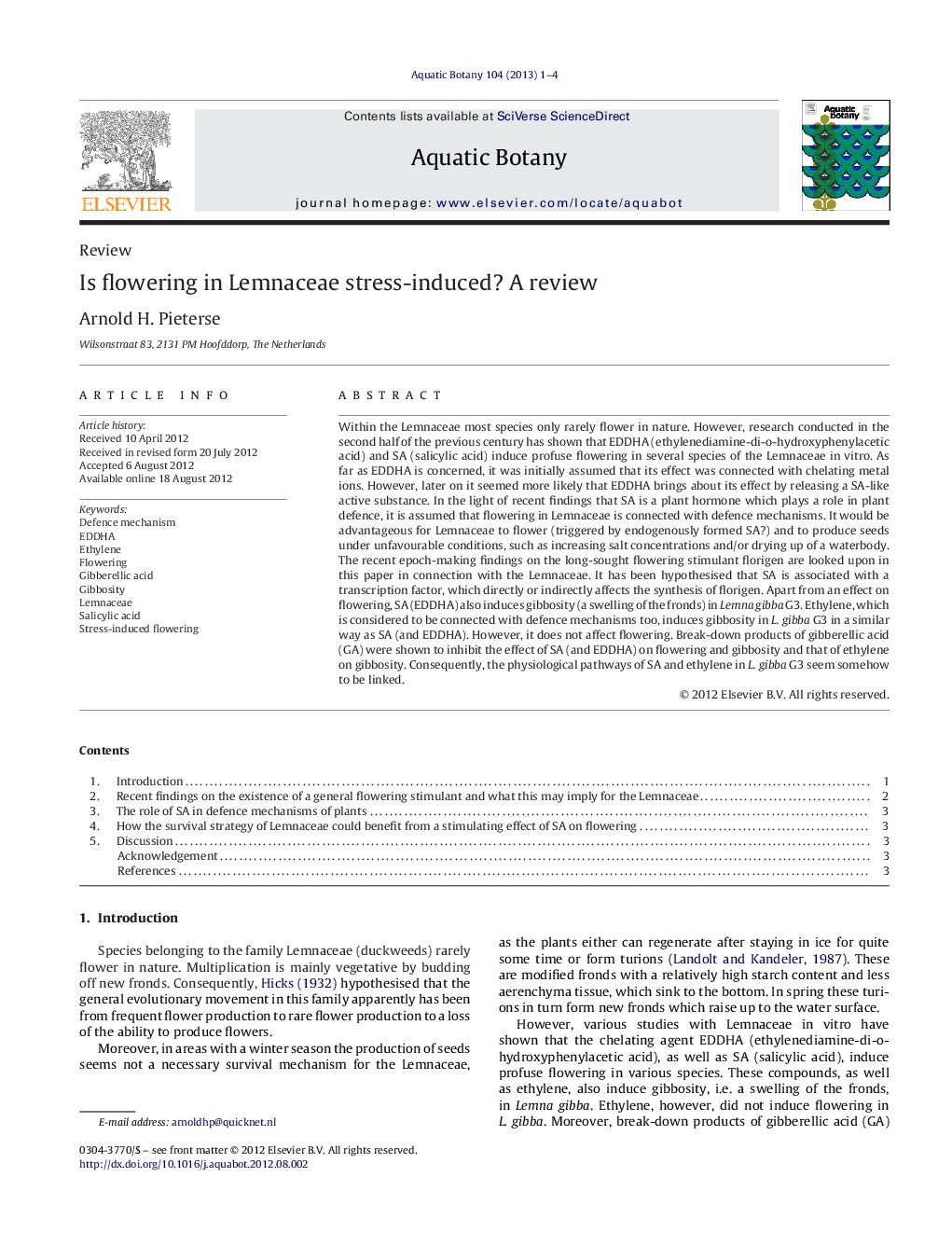| Article ID | Journal | Published Year | Pages | File Type |
|---|---|---|---|---|
| 4527960 | Aquatic Botany | 2013 | 4 Pages |
Within the Lemnaceae most species only rarely flower in nature. However, research conducted in the second half of the previous century has shown that EDDHA (ethylenediamine-di-o-hydroxyphenylacetic acid) and SA (salicylic acid) induce profuse flowering in several species of the Lemnaceae in vitro. As far as EDDHA is concerned, it was initially assumed that its effect was connected with chelating metal ions. However, later on it seemed more likely that EDDHA brings about its effect by releasing a SA-like active substance. In the light of recent findings that SA is a plant hormone which plays a role in plant defence, it is assumed that flowering in Lemnaceae is connected with defence mechanisms. It would be advantageous for Lemnaceae to flower (triggered by endogenously formed SA?) and to produce seeds under unfavourable conditions, such as increasing salt concentrations and/or drying up of a waterbody. The recent epoch-making findings on the long-sought flowering stimulant florigen are looked upon in this paper in connection with the Lemnaceae. It has been hypothesised that SA is associated with a transcription factor, which directly or indirectly affects the synthesis of florigen. Apart from an effect on flowering, SA (EDDHA) also induces gibbosity (a swelling of the fronds) in Lemna gibba G3. Ethylene, which is considered to be connected with defence mechanisms too, induces gibbosity in L. gibba G3 in a similar way as SA (and EDDHA). However, it does not affect flowering. Break-down products of gibberellic acid (GA) were shown to inhibit the effect of SA (and EDDHA) on flowering and gibbosity and that of ethylene on gibbosity. Consequently, the physiological pathways of SA and ethylene in L. gibba G3 seem somehow to be linked.
► Flower induction in Lemnaceae by the chelator EDDHA and salicylic acid is reviewed. ► Probably EDDHA brings about its effect by releasing a salicylic acid-like compound. ► It has been hypothesised that flowering in Lemnaceae is stress-induced. ► Probably salicylic acid is endogenously produced in Lemnaceae as a result of stress. ► In Lemna gibba G3 salicylic acid and ethylene interfere in a specific way.
